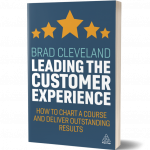The experiences that customers have with any organization—not just yours or others in your industry—shape their perceptions. So you’ve got to continually revisit what good service means. For customer experience leaders, this can seem like a daunting challenge. Fortunately, it’s not hit-or-miss guesswork. The International Customer Management Institute (ICMI) has identified 10 expectations customers have of customer service. They include (in no specific order):
- Be accessible (in the channels I prefer)
- Treat me courteously
- Be responsive to (and anticipate) what I need and want
- Do what I ask, promptly
- Provide well-trained and informed employees
- Tell me what to expect
- Meet your commitments and keep your promises
- Do it right the first time
- Follow up
- Be socially responsible and ethical
 What is changing, of course, is what these expectations mean. Accessibility is an example. For many organizations—even, say, a small retail store— customers assume that your services will be available from a convenient range of channels, which may include in-person, phone, self-service, mobile- friendly information, and any number of alternatives. They may initiate dialog through their smart watch or with voice command. Customers don’t want to think about the channels or processes. They just want service to be understandable and easy.
What is changing, of course, is what these expectations mean. Accessibility is an example. For many organizations—even, say, a small retail store— customers assume that your services will be available from a convenient range of channels, which may include in-person, phone, self-service, mobile- friendly information, and any number of alternatives. They may initiate dialog through their smart watch or with voice command. Customers don’t want to think about the channels or processes. They just want service to be understandable and easy.
Beyond these 10 expectations, there is another category of expectations that applies to service delivered in person, such as in a retail store or restaurant. It’s called “tangibles,” and refers to the aesthetics and functionality of the environment. In other words, anything that impacts the customer’s perception of the organization and service being delivered. These include:
- The facilities (comfort, appearance, functionality)
- Employees’ appearance (e.g., is there a dress code?)
- Safety (e.g., a well-lit parking lot)
- Amenities (e.g., Wi-Fi and water in waiting areas)
- Design (e.g., how easy it is to get around a building or complex)
- Other factors unique to your environment (e.g., daycare at a gym)
In fact, other customers can be considered one of the tangibles. Most restaurants require shoes and shirts, and some even ties or jackets. But for a snack bar at the beach, swimwear is fine.
You’ll want to consider both categories—the 10 expectations of service and the tangibles. Then, regularly revisit customer expectations with your team as you shape your approach to service. As you explore customers’ expectations, let me make three recommendations.
- Listen to your customers. Make the effort to get input from customers and employees firsthand. And make use of all forms of customer feedback to better understand expectations.
- Trust your instincts. If you prefer clean restrooms when you’re on a road trip, if you would like to run a question by your insurance company on a Saturday morning (because you’re busy the rest of the week), these may be obvious opportunities. Companies such as Wawa and GEICO have leveraged them into services that have fueled their brands.
- Make service easy and resolve issues quickly. Simplicity and speed are proving to be sure winners.

Excerpt from Leading the Customer Experience: How to Chart a Course and Deliver Outstanding Results by Brad Cleveland.



0 Comments